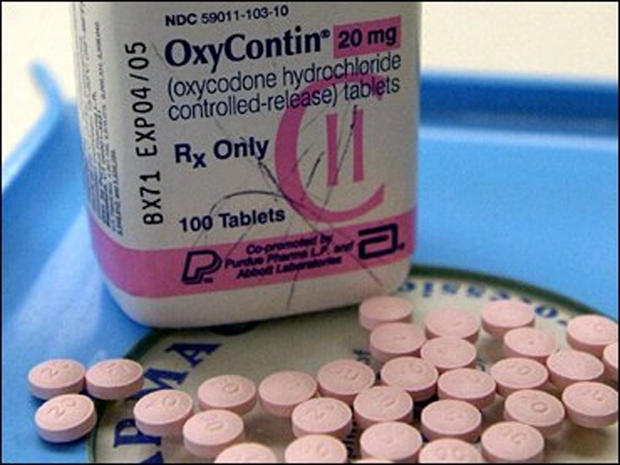With OxyContin farther from their grasp, more users switching to heroin
(CBS News) While efforts to curb OxyContin abuse seem to be succeeding, doctors are worried that addicts may be driven to use more dangerous opioids, including heroin.
Even though the formula of OxyContin has been changed to prevent the abuse of the drug through crushing or dissolving it in water for snorting or injection purposes, addiction to opioids still poses a problem.
"We're now seeing reports from across the country of large quantities of heroin appearing in rural and suburban areas," Dr. Theodore J. Cicero, vice chair of research at Washington University's department of psychiatry, told the Los Angeles Times. "Unable to use OxyContin easily, which was a very popular drug in rural and suburban areas, drug abusers who prefer snorting or IV drug administration now have shifted to more potent opioids if they can find them, or to heroin."
FDA mandates drugmakers to provide more painkiller education for doctors, patients
Purdue Pharma LP conducting children's trial of OxyContin
Analysis: High prevalence of painkiller sales turning America into painkiller nation
In a new correspondence, which was published in the New England Journal of Medicine on July 12, Cicero and his fellow researchers collected surveys from more than 2,500 patients at 150 drug treatment centers in 39 states. The subjects had been at the centers for about a year and a half before and after the release of abuse-resistant OxyContin and were being treated for prescription opioid abuse.
About 36 percent of the patients at the end of 2009 said their drug of choice was OxyContin, but only 13 percent of them still used it as their primary drug at the beginning of 2012.
The research showed that most people had switched to another stronger opioid. More potent Fentanyl or hydromorphone went up from 20 percent to 32 percent at this time. The percentage of patients who said they used heroin in the past 30 days increased from 10 percent to 20 percent. At the same time the amount of people abusing OxyContin dropped from almost 50 percent to 30 percent. One of their subjects told them that heroin was "easier to use, much cheaper and easily available."
"The most amazing thing was how quickly it dropped because they weren't able to extract the drug anymore. They switched to drugs that were potentially more harmful to them," Cicero said to Reuters.
That result was echoed by Deni Carise, chief clinical officer at Phoenix House and an addiction research and policy expert. She previously told HealthPop that she had seen an increase in teens who, within six months of the first time they used prescription opiates, started to abuse heroin. Part of the reason they switched was because their OxyContin supply had run out either through their family or friends, and heroin was much cheaper to procure. She argued that once a teen starts experimenting with drugs, they are more open to trying other substances.
Because of OxyContin's abuse potential, drugmakers have changed the formula to prevent addiction. In the mid 1990s, a slow-release version of the drug was put on the market. Swallowing this drug did not make people high, but users figured out crushing the pills or dissolving them in water, then consuming them by snorting or injecting them provided a much more potent effect. Then, an abuse-resistant OxyContin was released in August 2010. Crushing or dissolving the pills became near to impossible to do.
"There has been a reduction in the abuse of OxyContin, which was, of course, the predicted ... effect," Cicero explained to HealthDay. "We had some hypotheses that drug abusers would shift to (another opioid), but we didn't anticipate what would occur with heroin."
The sales of oxycodone have increased almost sixteen fold in some areas in the United States between 2000 and 2010, according to an Associated Press report. Pharmacies dispensed about 69 tons of pure oxycodone in 2010, enough to give 40 5-mg Percocets to every person in the U.S. Corresponding overdose deaths, pharmacy robberies and other problems have also been noticed.
Dr. Adam Bisaga, associate professor of psychiatry at Columbia University in New York City, argues however that the stigma behind using heroin would prevent people from wanting to use the drug instead of OxyContin. He said he doubts the study's results.
"People would probably not think twice about swallowing medication, but the thought of going to some shady neighborhood and getting heroin is not something that comes to mind," he told HealthDay. "It's not the same market.

